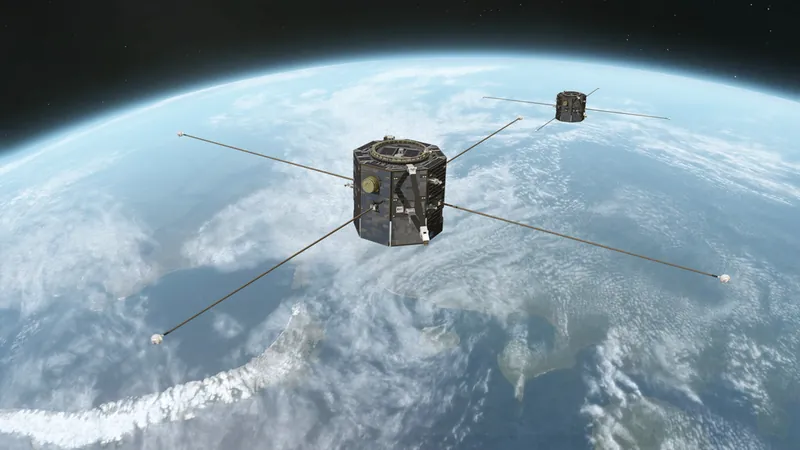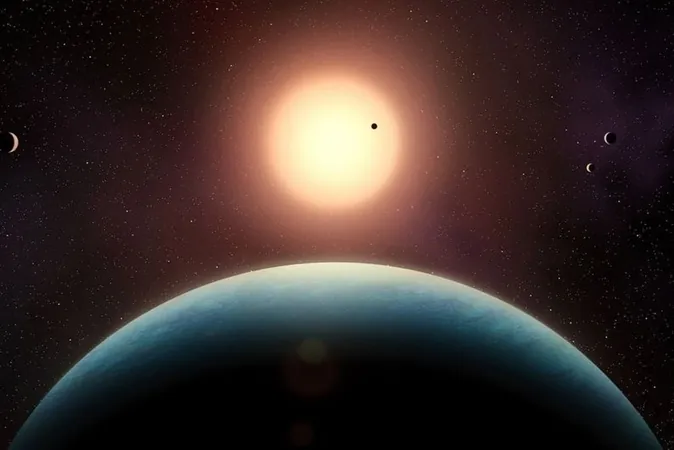
NASA's Game-Changing Satellites are Set to Revolutionize Our Understanding of Space Weather!
2025-07-19
Author: Jacob
Prepare for a groundbreaking mission that will transform how we understand and respond to the dangers of solar storms! In a monumental launch scheduled for late July, NASA is sending forth its Tandem Reconnection and Cusp Electrodynamics Reconnaissance Satellites, or TRACERS, designed to study Earth’s magnetic storms and their impact on our atmosphere.
These two satellites will operate in a sun-synchronous orbit, ensuring they always hover over the sunlit side of our planet, sweeping through the polar cusps—unique openings in Earth’s magnetosphere where field lines dip close to the poles.
When solar wind particles strike our magnetosphere at high speeds, they create chaos by overloading these magnetic fields, leading to a phenomenon known as magnetic reconnection. This process unleashes a substantial amount of energy, accelerating charged particles into our atmosphere and sometimes resulting in breathtaking auroras!
TRACERS aims to delve deeper into the magnetic-reconnection process and how space weather influences life on Earth. "The insights gained from TRACERS will be crucial for predicting how solar energy affects everything from GPS and communication signals to power grids and even astronauts in space," said Joe Westlake, Director of NASA's Heliophysics Division.
Historically, understanding magnetic reconnection has been challenging due to the limitation of satellites capturing only brief snapshots of the phenomena as they pass through. These glimpses often fail to convey the dynamic nature of reconnection, leaving scientists in the dark about why conditions change.
This is where TRACERS redefines the game. With its twin satellites tracking closely together, separated by just minutes, researchers will obtain real-time, detailed measurements of magnetic and electric fields during reconnection events.
"By closely following one another, these twin satellites will provide critical data on how solar energy couples with near-Earth space, revealing changes in real-time," explained David Miles, principal investigator of TRACERS. This pivotal data will contribute tremendously to the existing knowledge from missions like NASA's Magnetospheric Multiscale Mission (MMM) and others actively studying solar interactions.
With a budget of $170 million, TRACERS is set for launch aboard a SpaceX Falcon 9 rocket, alongside other miniature missions, marking a significant leap forward in our quest to understand and mitigate the impacts of solar storms on our everyday lives.
"This mission is essential for safeguarding our way of life on Earth," Westlake emphasized. As we stand on the brink of this mission, the TRACERS satellites promise not just to enlighten us but also to shield us from the unpredictable forces of the universe!









 Brasil (PT)
Brasil (PT)
 Canada (EN)
Canada (EN)
 Chile (ES)
Chile (ES)
 Česko (CS)
Česko (CS)
 대한민국 (KO)
대한민국 (KO)
 España (ES)
España (ES)
 France (FR)
France (FR)
 Hong Kong (EN)
Hong Kong (EN)
 Italia (IT)
Italia (IT)
 日本 (JA)
日本 (JA)
 Magyarország (HU)
Magyarország (HU)
 Norge (NO)
Norge (NO)
 Polska (PL)
Polska (PL)
 Schweiz (DE)
Schweiz (DE)
 Singapore (EN)
Singapore (EN)
 Sverige (SV)
Sverige (SV)
 Suomi (FI)
Suomi (FI)
 Türkiye (TR)
Türkiye (TR)
 الإمارات العربية المتحدة (AR)
الإمارات العربية المتحدة (AR)